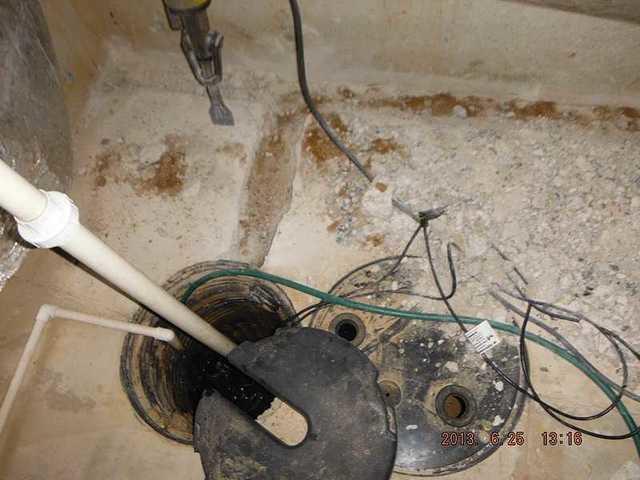
Keeping the existing sump pump
One of the comments we get at DryZone most often is how we are all user friendly. DryZone inspectors are low pressure and work with the homeowners rather than tell them what we want to do. After all, we don't live there. In this home, the owner told the inspector that water only came in around certain walls. He didn't want to waterproof the whole basement, and the sump pump was almost never used since the water couldn't reach it. The inspector sat down with this homeowner and designed a system that best fit the situation. If for some reason a different wall leaks in the future, the WaterGuard system can be added onto. The existing sump pump was left in place, and can be replaced in the future if the need should arise.
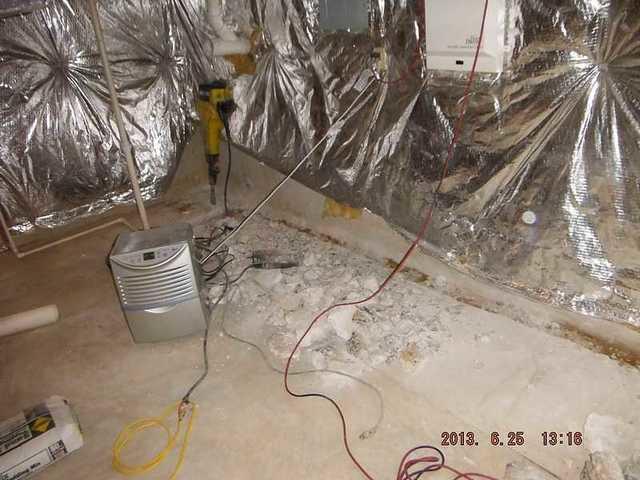
Prepping the floor for the WaterGuard
WaterGuard is a sub floor drainage system, this means that some of the concrete floor has to be removed for the installation. DryZone uses high quality Hilti jackhammers. They cut through the floor quickly and efficiently. This means we spend less time in your home and you can start getting the benefits of your new drainage system a little quicker than you might have expected. Another great thing about the WaterGuard is that it sits on top of the concrete footer, up out of the dirt.
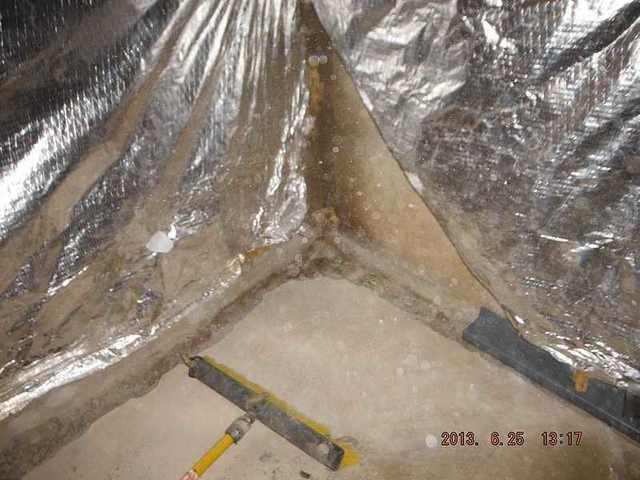
Installing the WaterGuard drainage system
You can see the WaterGuard up against the wall and on top of the footer. Most people ask how far out from the wall we will need to jackhammer, expecting us to say over a foot. Fact is, this drainage system works better and it is less invasive. WaterGuard is out of the dirt so it won't clog easily like some other systems. The crews usually only have to cut around 6-8 inches from the wall. It just makes sense that if the walls are leaking, the pipes should be up close to the edge of the wall.
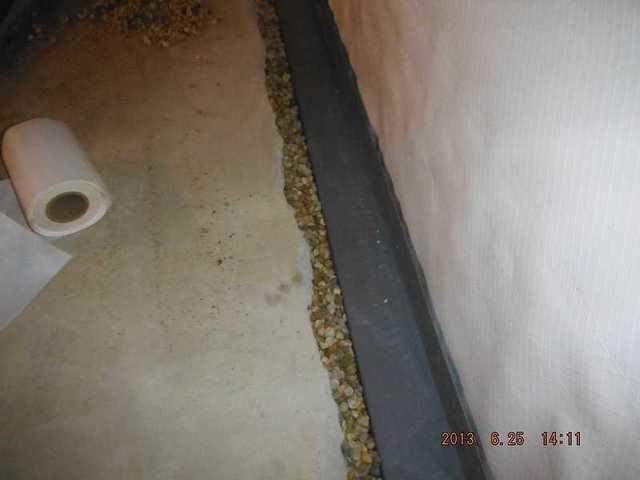
Straight and rigid pipe system in the leaky basement
WaterGuard is installed in long and straight sections for less chance of kinks and clogs. The pipes are surrounded with small stones and pebbles to allow for easy drainage. If water comes up from under the floor, it will find the path of least resistance. DryZone provides that path that leads directly to our basement drainage pipes and off to the sump pump.
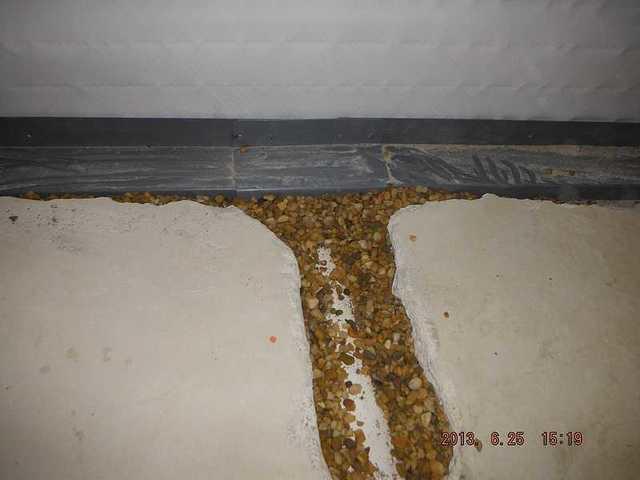
Connecting the wall perimeter drainage to the sump pump
Connecting the drainage pipes to a sump pump is essential. If it was just pipes with no pump then the water would never be pumped out of the basement. In this picture, DryZone crews have installed a small piece of PVC pipe to connect the wall drainage to a pump. Sometimes DryZone installs a brand new sump pump with a battery back up in case of a power failure. In this case, the homeowner decided to keep their existing pump because it wasn't very old and still worked great.
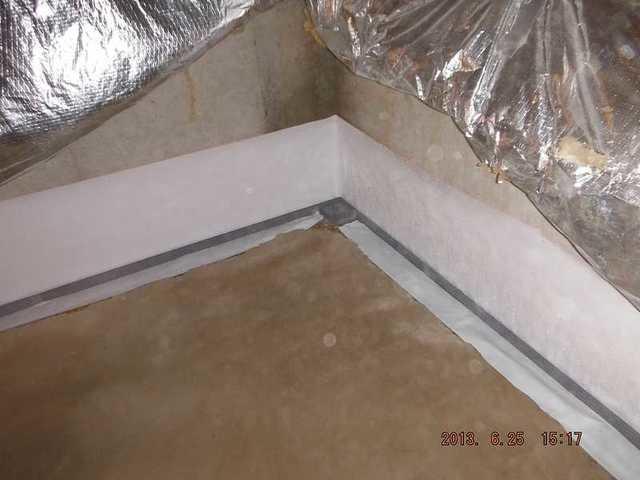
Creating a tight system of drainage pipes
DryZone uses several "extras" when installing a WaterGuard system on Delmarva. The first thing that we do is to wash the area down after the floor is jackhammered. This removes most of the concrete dust so it doesn't clog up the pipes. Next comes the CleanSpace wall liner. The white plastic you see on the walls is put there to prevent a wall crack from springing a leak and missing the drain. If a crack leaks towards the bottom of the wall, it will drip down the back of the liner and into the pipes. Another advantage to WaterGuard is the drainage ports. The corner of the two sections of WaterGuard is actually an inspection port. You can lift up the cap and flush the whole system out if you see dirt building up.
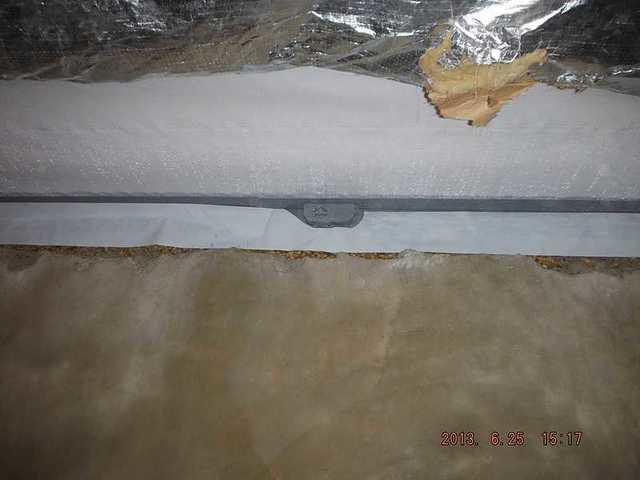
A different kind of inspection port
DryZone uses different styles of inspection ports, depending on the situation. This port is used in the middle of a long section of straight pipe. The top can still be easily removed and the pipes can be flushed out. Many homeowners are amazed that they can see inside the drainage pipes. It gives them a sense of ease knowing that they can fix things if a little bit of dirt builds up in the pipes.
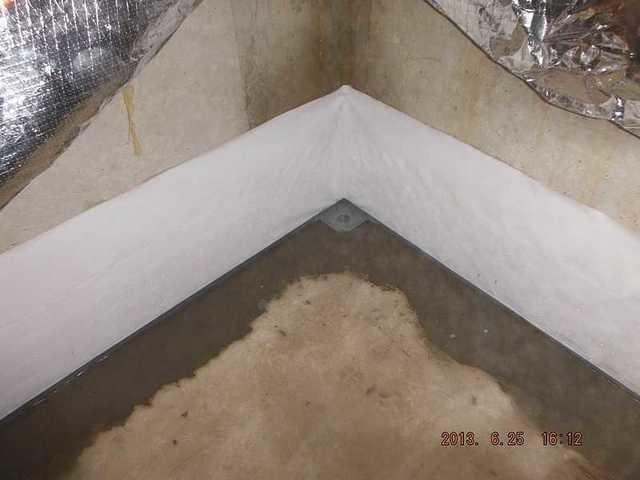
Fixing the basement floor after the installation is complete
Once all the WaterGuard is in place, DryZone crew members replace the concrete to make the floor usable again. After the concrete dries, the leaky basement will be a thing of the past, at least the areas with pipe.
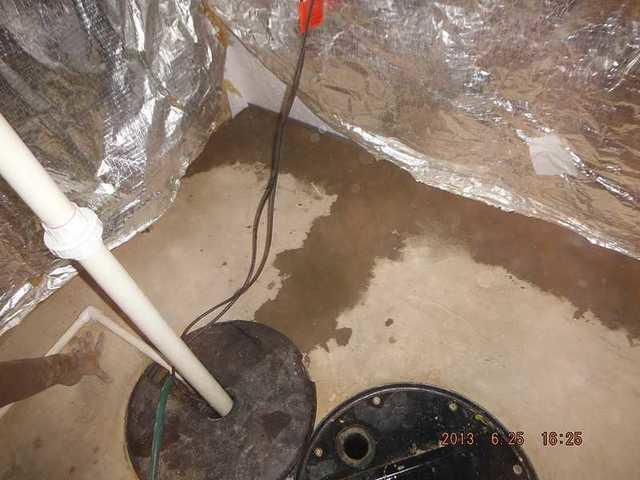
Sump pump is ready to go
Even though DryZone didn't install a new sump pump, we were able to work with the existing one. The container wasn't broken and the lid still fits great. Now the water from the wall leaks can finally reach the sump pump.
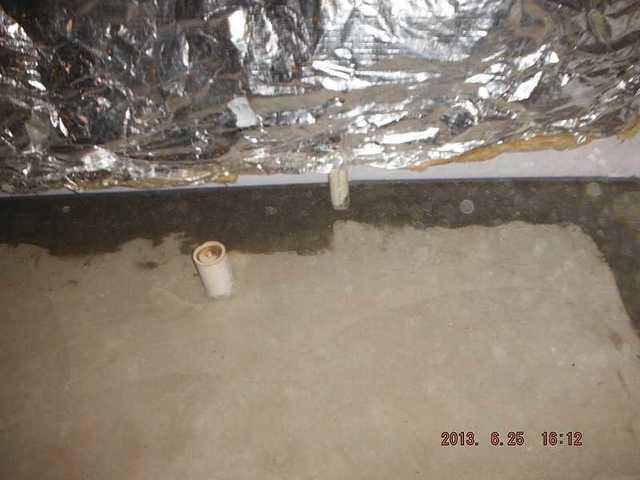
Working around radon detection systems and other pipes
Many people have a radon detection system in the basement. DryZone is great at working around things like that. We want to make the entire basement waterproofing process as painless as possible. Most of the homeowners we meet are just tired of dealing with the problem in the basement, we aim to relieve some of that stress with our great waterproofing products and services.
